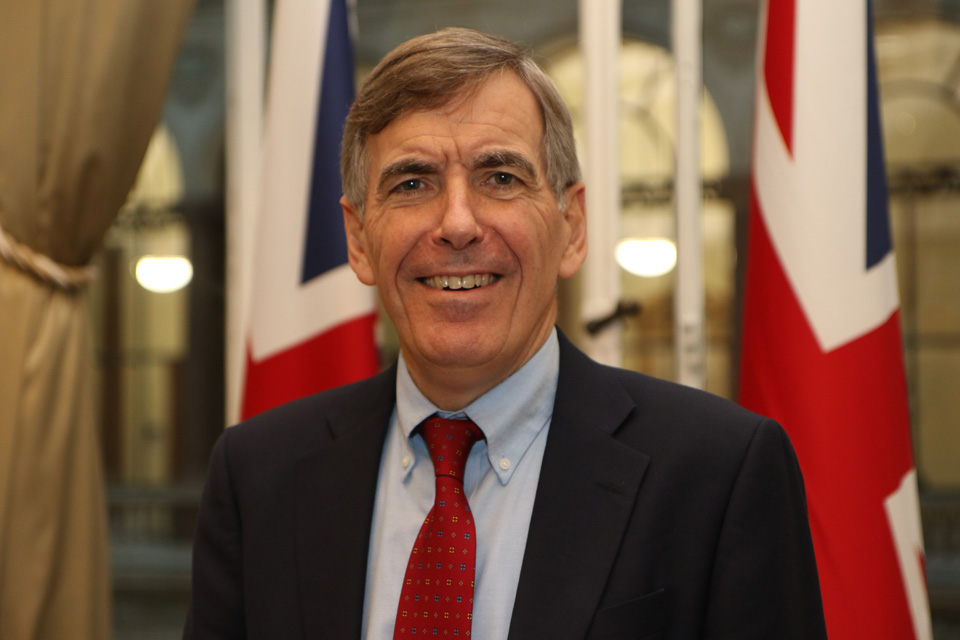
That is why in November, we launched a strategic partnership with the US to accelerate fusion energy demonstration and commercialisation. This evening I have met of course Brits, but Americans and even some Canadians and others – we need to collaborate, both to accelerate commercialisation and to reduce the cost of fusion energy development. Through it, we want to advance collaborative efforts on technical challenges, supply chain building, skills development, and public engagement. When I arrived here in 1987 – it was a long time ago – Margaret Thatcher and Ronald Reagan were leaders of the UK and the US. And after all, it is up to us to inspire and nurture the next generation of passionate fusion scientists, engineers, and communicators. Thank you so much. We’re very grateful for everything you’re doing to develop and to promote, publicise, fusion technology; pushing the very frontiers of science and bringing what was once science fiction, particularly back in those days, to the very cusp of reality today. And of course, the US will be one of our most important allies in all of this – our countries continue to lead the world in scientific research, and are home to the majority of the world’s top 10 universities, including this hallowed institution. If we get this right, we could deliver global energy security and decarbonisation, while also delivering abundant energy and economic growth for all our communities. But we cannot do this alone. Fusion is a global endeavour, and the realisation of fusion energy requires continued collaboration. But the highest-grossing single – if any of you know what a single was – that year, was ‘Walk Like an Egyptian’ by the Bangles. That’s why this Programme will fund a Fusion Skills Centre, which will train over 2,200 people by working with businesses and universities to increase the number of apprentices and postgraduates working on fusion. Education and training will drive the future of fusion. And it is only going to be through this collaboration that we realise the perpetual human dream of unlimited, clean energy for all. Not only that, but commercialising fusion presents significant economic opportunities as well. This Programme will fund a number of initiatives, like a fuel cycle testing facility to support fusion commercialisation, and new premises for private fusion companies at the Culham Centre. In this context, the world-changing potential of nuclear fusion for helping solve these challenges could not be clearer. It will also have a significant outreach programme, particularly targeting under-represented groups. Our Fusion Futures Programme aims to strengthen existing international collaborations, as well as exploring new opportunities to contribute globally. That is why the UK has been leading the way in moving fusion energy forward. From the Culham Centre in Oxfordshire, which has been at the cutting edge of fusion science for almost 60 years, to the UK-based companies like Tokamak, who are pioneering commercial fusion energy. Well, good evening. It’s great to be with all of you and it’s fantastic to be back at Harvard Business School. But all of us again must ensure that people understand fusion energy, its risks and of course, its opportunities. It’s really exciting to speak to some of you about your plans and the collaboration that is going on between the UK and the US. And just a few weeks ago, we announced that the UK-based Joint European Torus fusion reactor achieved a world record for energy output. It produced high fusion power consistently for five seconds, resulting in a ground-breaking record of 69 megajoules, using a mere 0.2 milligrams of fuel. Let me just conclude by saying that I’m sure there’s no doubt amongst us that the world needs fusion now more than ever. The UK Government also launched a refreshed Fusion Energy Strategy in October, outlining our vision to support the fusion sector through investment, upskilling, and of course, that vital international collaboration. Coming from a non-science background, I can sympathise with how science can seem mystifying to some, and recent years have shown the dangers of science misinformation. You know, we face great challenges today – climate change and rapidly-evolving geopolitical events have brought home the importance of ensuring our energy security and finding energy super-sources which are affordable, reliable, and sustainable. It includes up to £650 million in investment for a new ‘Fusion Futures Programme’. This new partnership builds on longstanding collaboration between our research institutions and private sectors and aims to deepen our commitment to working together to solve these difficult challenges. As I’m sure you’ll appreciate, outreach here is absolutely vital. Public engagement and science communication should be central to our mission. It was that long ago, but what that shows is, is that things might change but the constant is that the output from places like HBS and MIT here is just phenomenal. Now for some of you in this room, that’s ancient history but it was a reality at the time and I was just checking out to make sure that all of the points in my really heavy speech here were fact-checked. It is a great honour, genuinely, to be asked here today, particularly on this all-important subject of fusion. And this amazing building, well, I seem to remember it perhaps being a car park or something at that particular moment in time and it’s great to see how things are moving forward in B School, but also more widely here in this super vibrant part of the US. What you didn’t say was that it was a long time ago – several decades ago to be perfectly honest. It is a huge priority on both sides of the Atlantic and, of course, for the world.